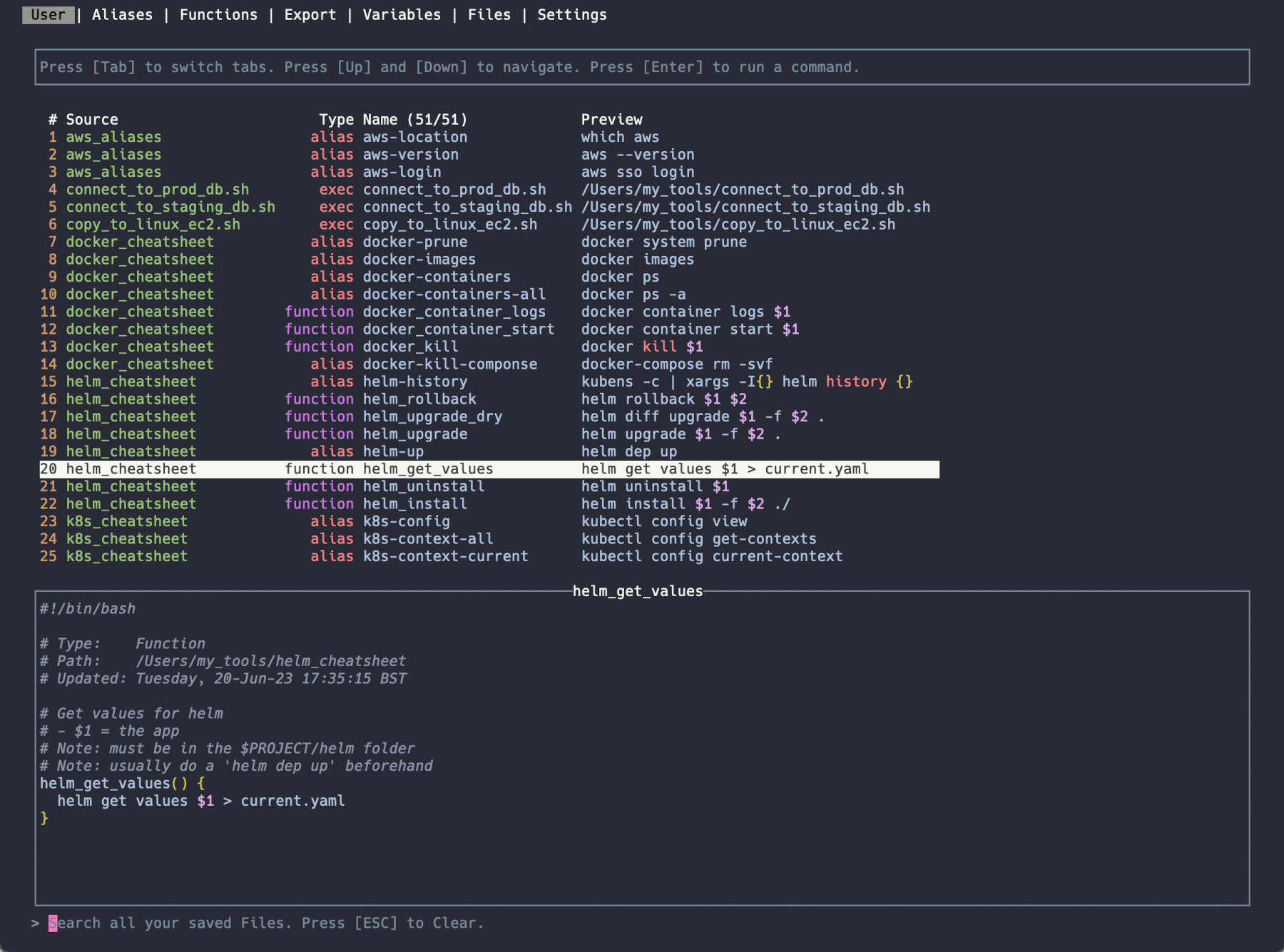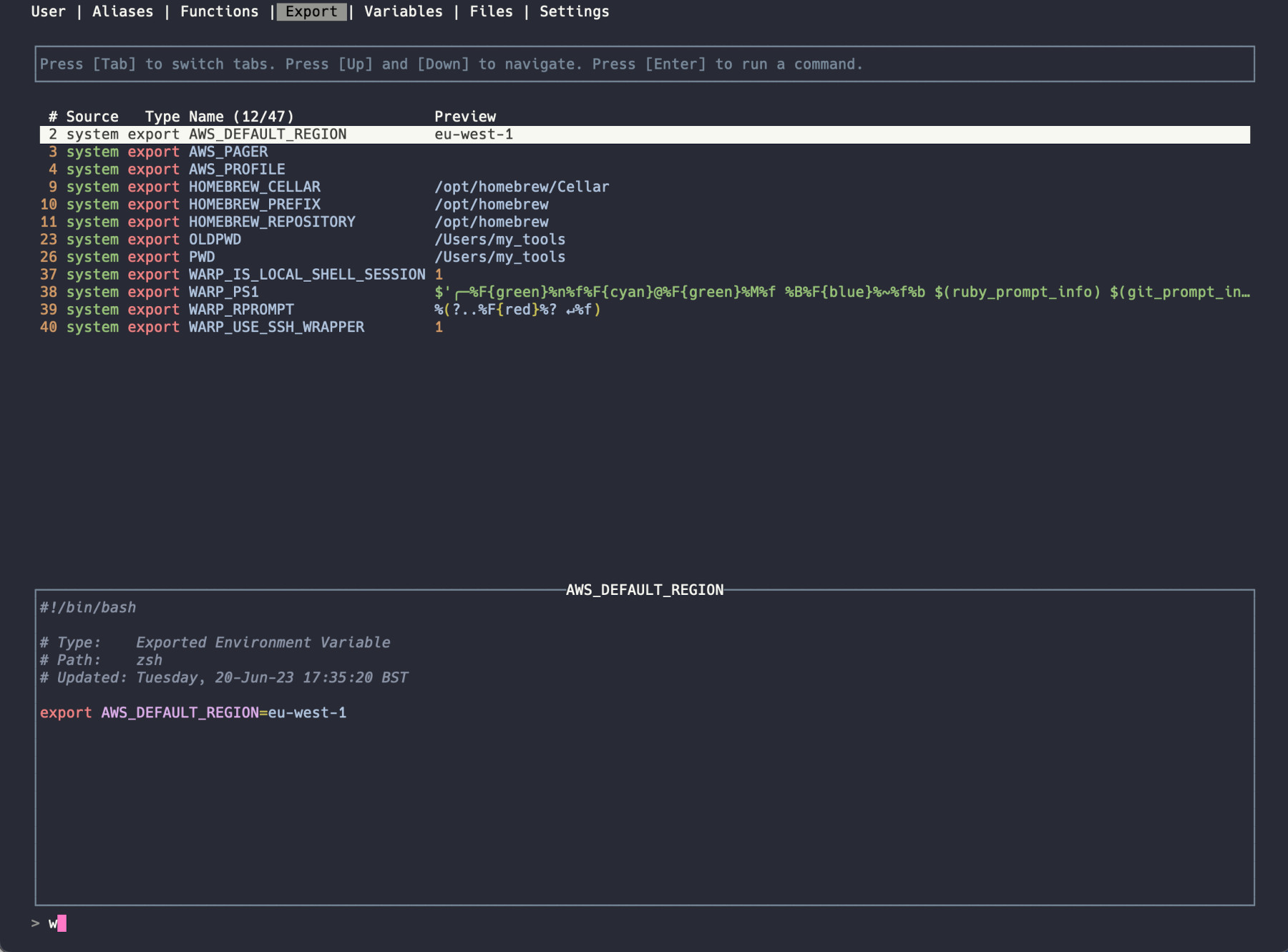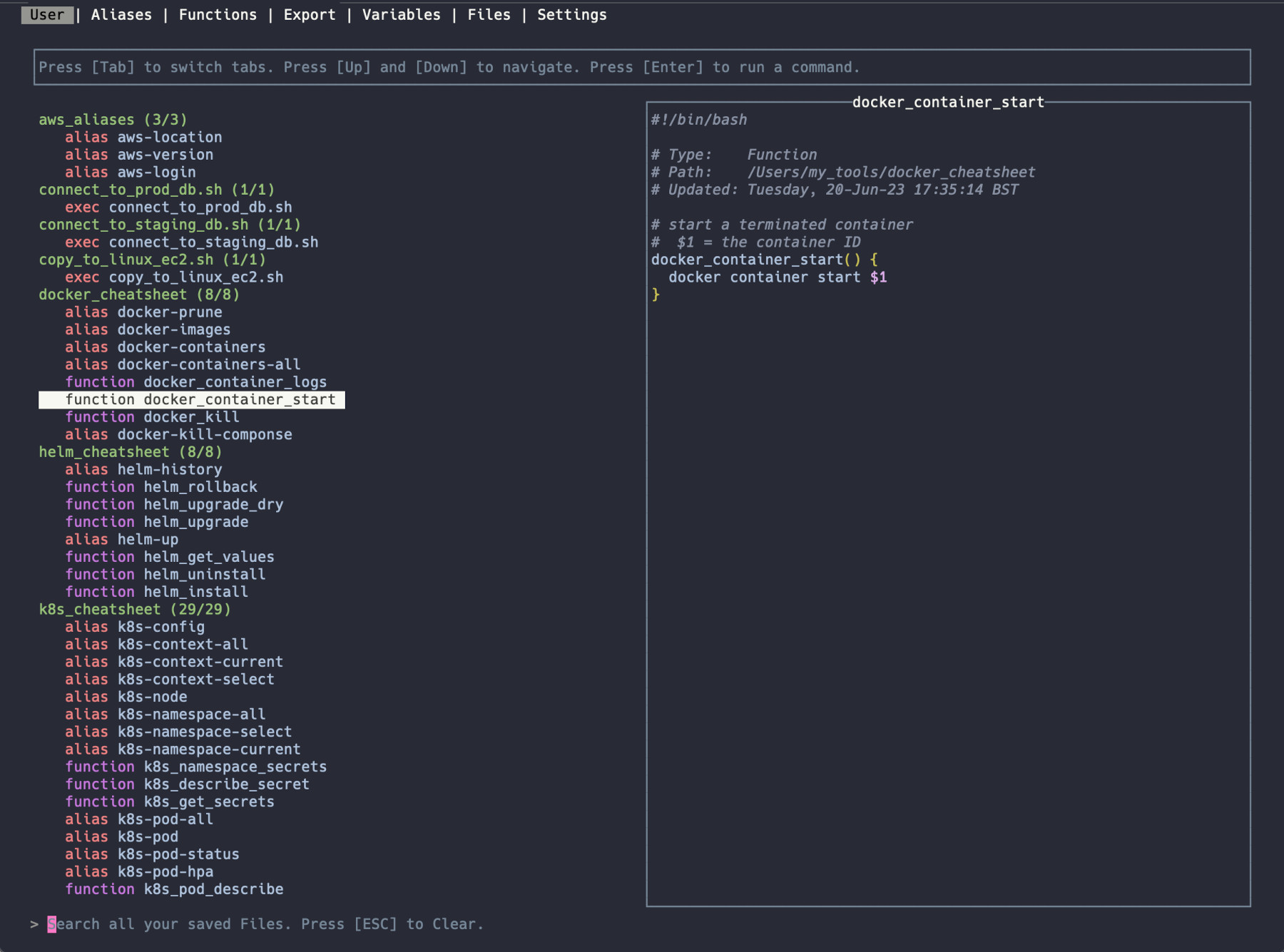BashVault
Get BashVault with a one-time purchase and keep it forever.
Manual
If you haven't installed BashVault, you can follow the instructions here.
Getting started
Once installed and set up, BashVault can be summoned by just typing:
bashvaultin your terminal.
In order to make the most of the app, you'll want to import some files. BashVault supports two types of files,
scripts and cheatsheets,
and can load them from your local machine or from any accessible remote location (a git repo, a ftp
server, etc).
Scripts are any normal Shell scripts. Any file that can be invoked by typing
./my_script.sh, can be run by BashVault.
Cheatsheets are simply files containing aliases, functions,
variables, etc.
Depending on your shell, you will already have default files like .bashrc, .zshrc, etc.
You can check out starter cheatsheets here.
To import a file, you can use the -import flag, followed by the name of the file.
bashvault -import /path/to/my/script.sh
bashvault -import https://path/to/remote/script.sh
bashvault -import /path/to/my/cheatsheetIf you have a lot of files to import, you can just give BashVault the path to the whole folder.
bashvault -import /path/to/my/folderNote that right now remote folders (or integration with full git repos) are not supported.
In any case, you should see a screen like the one in the picture.
BashVault will list the available file. If you've specify just one, it'll just show one. If you specify a folder, it'll show every file in the folder, recursively.
You can press [UP] and [DOWN] to navigate the list.
For each file BashVault will display its contents.
You can press [LEFT] and [RIGHT] to toggle between the three bottom options:
alias,
function or variable in the file and import it one by onescript
Getting comfortable
Once you've imported your first files, you should see them in your User tab.
You'll notice the different elements in the interface.
At the top, you have a number of tabs: User, Alias, etc.
Then a list of all the things you've imported.
Then a panel that shows a preview of each command. Especially useful for scripts.
And finally a search bar.
As expected, pressing [UP] or [DOWN] will move the cursor up or down.
Typing anything will trigger the search functionality.
A special note in pressing [TAB] - this will change the current tab to the next one.


Let's go through each of the main tabs the app provides.
The Aliases tab
The Aliases tab shows all aliases currently present on your system.
You can reach it by pressing [TAB] repeatadly or by directly running this command in your
terminal:
bashvault -a
Notice this tab has exactly the same elements as the User tab.

The Functions tab
The Functions tab shows all functions currently defined in your system.
You can reach it by pressing [TAB] repeatadly or by directly running this command in your
terminal:
bashvault -f
Notice this tab has exactly the same elements as the User tab.

The Export tab
The Export tab shows all environment variables currently exported by your system.
You can reach it by pressing [TAB] repeatadly or by directly running this command in your
terminal:
bashvault -x
Notice this tab has exactly the same elements as the User tab.

The Variables tab
The Variables tab shows all environment variables currently set in your system.
You can reach it by pressing [TAB] repeatadly or by directly running this command in your
terminal:
bashvault -e
Notice this tab has exactly the same elements as the User tab.

The Files tab
The Files tab allows you to manage existing files you've imported in BashVault.
Just like in other tabs, [UP] and [DOWN] will help you navigate.
Pressing [ENTER] will open up a popup with two options:

Running commands
The final piece that makes BashVault useful is that it can execute all of these scripts, aliases, functions, etc,
by just selecting the right item and pressing [ENTER].
Aliases, functions, variables are stored in memory.
Scripts are executed by referencing their absolute path.
BashVault will display the command or script it's trying to run.
It'll also allow you to enter parameters, for functions and scripts.
If you want to enter one parameter, it's as simple as
Running: /my/example/script.sh
Input: abcIf you want to enter more parameters, you can:
Running: /my/example/script.sh
Input: "my first param" "my second param" 9999In short, exactly like running your own scripts or functions.


Other features
Switch between detailed and compact mode
You can switch between the default Compact mode and a Detailed mode.

Light and dark theme
You may run your terminal in Dark mode or Light Mode.
BashVault dynamically detects the mode you're on and adapts accordingly.

Support multiple colour modes
Sometimes your terminal might not support truecolor.
BashVault tries it's best to support the following modes, in both Light and Dark mode:
